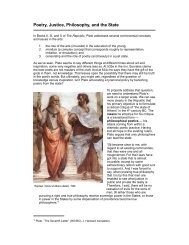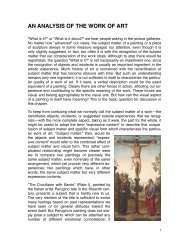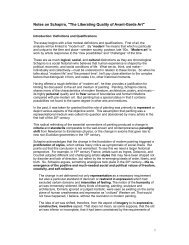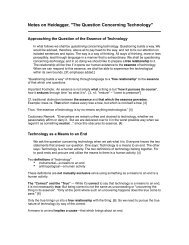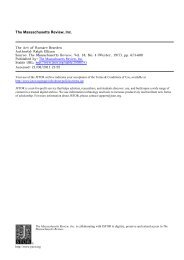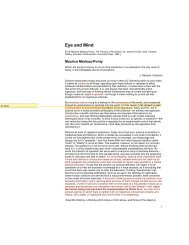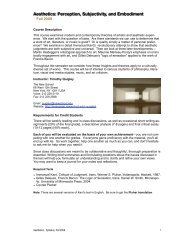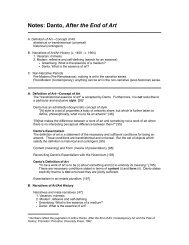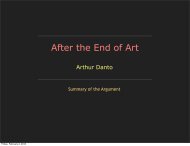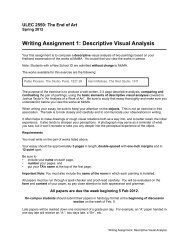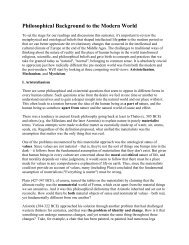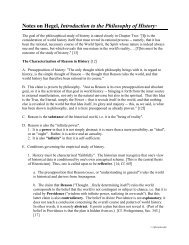âThe Liberating Quality of Avant-Garde Artâ - Timothy R. Quigley
âThe Liberating Quality of Avant-Garde Artâ - Timothy R. Quigley
âThe Liberating Quality of Avant-Garde Artâ - Timothy R. Quigley
Create successful ePaper yourself
Turn your PDF publications into a flip-book with our unique Google optimized e-Paper software.
Modern Art: Basic Assumptions, Definitions, and QualificationsEmergence <strong>of</strong> New Criteria and Proliferation <strong>of</strong> StylesThe change in art dethroned not only representation as a necessary requirementbut also a particular standard <strong>of</strong> decorum or restraint in expression which hadexcluded certain domains and intensities <strong>of</strong> feeling. The notion <strong>of</strong> the humanity <strong>of</strong>art was immensely widened. Many kinds <strong>of</strong> drawing, painting, sculpture andarchitecture, formerly ignored or judged inartistic, were seen as existing on thesame plane <strong>of</strong> human creativeness and expression as “civilized” Western art. Thatwould not have happened, I believe, without the revolution in modern painting.The idea <strong>of</strong> art was shifted, therefore, from the aspect <strong>of</strong> imagery to itsexpressive, constructive, inventive aspect. That does not mean, as somesuppose, that the old art was inferior or incomplete, that it had been constrained bythe requirements <strong>of</strong> representation, but rather that a new liberty had beenintroduced which had, as one <strong>of</strong> its consequences, a greater range in theappreciation and experience <strong>of</strong> forms. [Schapiro, 3]William Baziotes, The Flesh Eaters, 1952Helen Frankenthaler (American, 1928-2011). Mountains and Sea, 1952Tuesday, February 7, 2012



